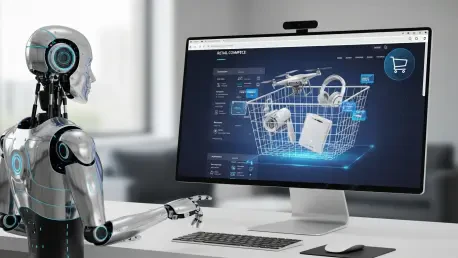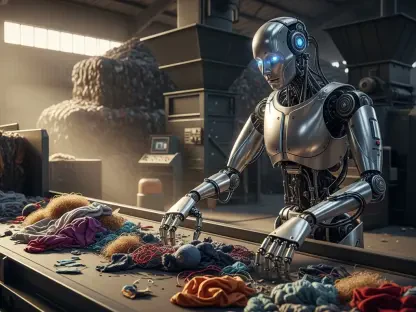I’m thrilled to sit down with Zainab Hussain, a seasoned e-commerce strategist with a deep background in customer engagement and operations management. With years of experience helping businesses navigate the digital landscape, Zainab offers a unique perspective on how emerging technologies like AI are reshaping retail, especially for independent merchants on Main Street. In our conversation, we dive into the concept of agentic commerce, the divide between commodity and experiential shopping, the challenges and opportunities AI brings to small retailers, and the lessons learned from past disruptions like the COVID-19 pandemic. Join us as we explore how Main Street can adapt and thrive in an AI-driven world.
How would you describe agentic commerce to someone who’s new to the idea?
Agentic commerce is essentially when AI acts as a personal shopper on your behalf. Think of it as a digital assistant that knows your preferences, searches for products, compares prices, and even makes purchases for you. Unlike traditional online shopping, where you’re actively browsing and clicking, agentic commerce automates much of that process. It’s like telling a friend, “Hey, I need laundry detergent,” and they go out, find the best deal, and bring it back to you—except it’s an algorithm doing the work. A simple example might be asking an AI tool to reorder your favorite brand of coffee pods every month without you lifting a finger.
What kind of split do you see AI creating in the retail world?
AI is really sharpening a divide that’s already there between two types of shopping: commodity buying and experience-based shopping. Commodity buying is when you’re just getting something basic or widely available—like toothpaste or printer paper—where price and speed matter most, and AI can handle it effortlessly. Experience-based shopping, though, is about the personal touch, the story, or the connection—like visiting a local bookstore for a signed copy or a wine shop where the owner picks the perfect bottle for your dinner. AI can streamline the mundane stuff, but it struggles to replicate the human warmth or expertise of a small retailer. That split means Main Street shops have a chance to lean into what makes them special.
Can you give a specific example of a commodity item AI might handle easily, and contrast it with an experiential purchase?
Sure, a commodity item could be something like ordering batteries. You don’t care much about where they come from as long as they’re the right type and arrive quickly—AI can search, compare, and buy them in seconds. On the flip side, an experiential purchase might be buying a handmade necklace from a local jeweler for a loved one’s birthday. You’re not just buying the item; you’re chatting with the artisan, hearing the story behind the piece, and feeling that personal connection. That’s something AI can’t fully capture, no matter how smart it gets, because it’s about the moment and the relationship, not just the transaction.
What are some of the toughest hurdles Main Street retailers face with AI shopping on the rise?
The biggest hurdle is competition. AI often prioritizes efficiency—lowest price, fastest delivery—which tends to favor big players with massive inventories and logistics networks. Small shops can’t always match that speed or scale, so they risk being overlooked when an AI agent is doing the shopping. Plus, if customers start relying on AI for most purchases, foot traffic to local stores could drop, especially for businesses selling everyday items. I think smaller retailers in generic product categories, like basic household goods, might be more at risk compared to niche or specialty stores that offer something unique.
On the other hand, how can independent retailers turn AI shopping into an opportunity?
Independent retailers have a real chance to stand out by doubling down on what AI can’t do—offer authentic, human experiences. That personal touch, like knowing a customer’s name or remembering their last purchase, creates loyalty that no algorithm can match. Also, AI can actually help drive customers to local stores if retailers get discoverable within those systems. For instance, if a small pet store lists its unique services or products online with the right keywords, an AI agent might recommend it over a big-box store for someone searching for a specific dog toy or expert advice. It’s about blending the digital and the personal.
I loved the parking meter analogy for external changes. Can you unpack how something like that affects a small business and what it teaches us about AI?
Absolutely. The parking meter story shows how even a small external change can disrupt a business’s flow. In that case, a little downtown shop selling coffee and leather goods saw sales drop because the city added parking fees. Customers didn’t want to pay extra just to stop by for a quick coffee—it changed their behavior. The lesson for AI is similar: it’s an outside force that alters how people shop, often in ways small retailers can’t control. But just like the shop could’ve adapted by covering parking costs for customers, retailers today can find creative ways to work with AI, whether it’s making their online presence stronger or emphasizing in-store experiences that draw people despite the digital shift.
How did the challenges of the COVID-19 pandemic prepare Main Street retailers for disruptions like AI shopping?
The pandemic was a crash course in adaptation for many small retailers. Overnight, if you didn’t have an online presence, your business was basically invisible. A lot of Main Street shops had to scramble to set up websites, offer curbside pickup, or sell through social media. That push forced them to modernize and learn how to connect with customers digitally, which is a huge asset now as AI shopping grows. Those lessons in flexibility and digital outreach mean many retailers are better equipped to integrate with or stand out in an AI-driven market—they’ve already proven they can pivot when the world changes.
Can you elaborate on the difference between synthetic and authentic experiences in retail, and why it matters in the age of AI?
Synthetic experiences are what you often get with big online platforms or AI-driven shopping—everything feels standardized, algorithmic, and impersonal. It’s efficient, but it lacks soul. Authentic experiences, on the other hand, are what local merchants bring to the table. It’s the neighborhood wine shop owner who remembers your taste and suggests a bottle with a story, or the café where the barista knows your order by heart. That human connection feels real and irreplaceable. In the age of AI, this matters because as synthetic experiences become the norm for everyday shopping, people start craving authenticity even more. It’s a chance for small retailers to shine by being the antidote to digital sameness.
What’s your forecast for the future of Main Street retail as AI continues to shape how people shop?
I’m cautiously optimistic. AI will definitely keep pushing efficiency, handling more of the routine purchases and potentially pulling some customers away from physical stores. But I believe it will also create a stronger demand for what Main Street does best—human connection and unique experiences. Retailers who succeed will be the ones who embrace a hybrid approach: making themselves visible and relevant in AI search systems while doubling down on the personal, in-store magic that no tech can replicate. I think we’ll see a world where AI frees up time for people to seek out meaningful shopping moments, and Main Street could become the heart of that if they play their cards right.









